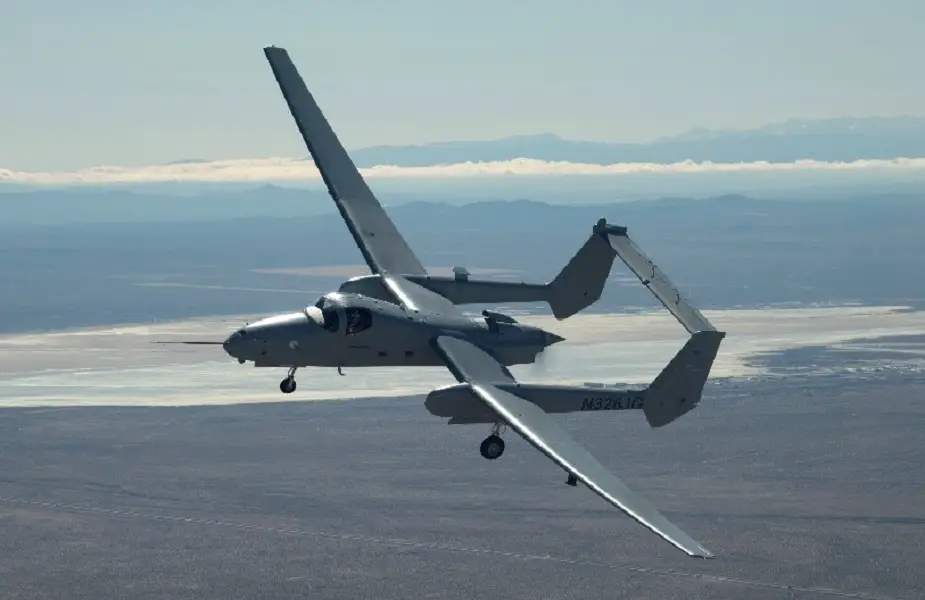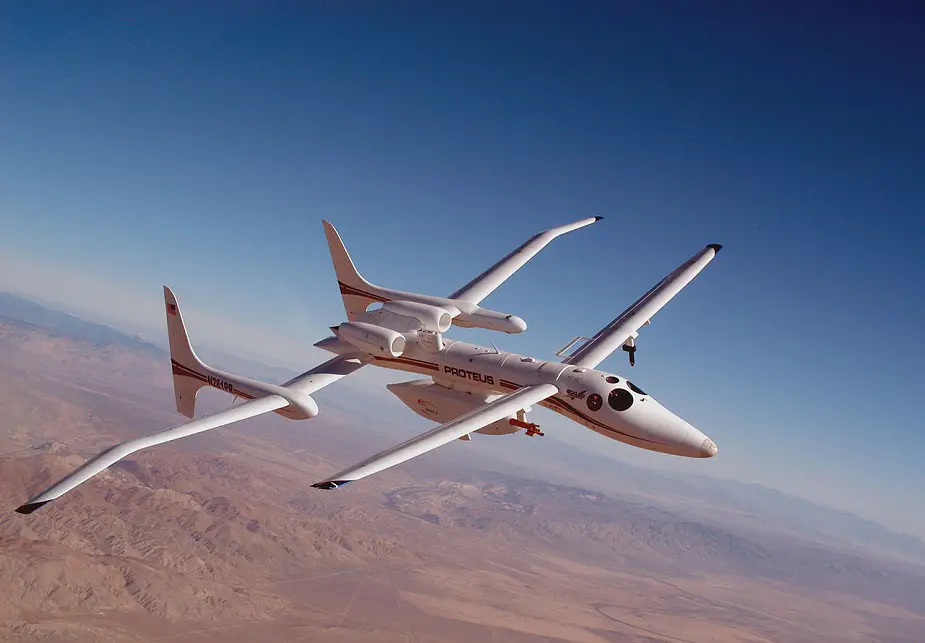Northrop Grumman Corporation successfully demonstrated a data link for connecting aircraft in highly contested airspace for long-range command and control through an open architecture network. This experiment is a critical milestone in the evolution of a distributed multi-domain battle management command and control architecture that maintains decision superiority for the U.S. military and allies.
Follow Air Recognition on Google News at this link

The flight demonstration linked the Scaled Composites Proteus, a High-Altitude, Long-Endurance research aircraft, with a Firebird (pictured here) , an unmanned air vehicle with the capability to be flown manned, through an advanced line-of-sight data link with low probability of intercept/low probability of detection characteristics that includes anti-jam properties. The aircraft established a link, performed a simulated ISR mission, and connected back to a cloud-based 5G network testbed through a novel prototype multi-level security switch (Picture source: Northrop Grumman)
“Northrop Grumman technologies, built on advanced low size, weight and power electronics, enable integrated and secure communications across domains supporting the Department of Defense’s JADC2 strategy,” said Tom Pieronek, chief technology officer and vice president, research & technology, Northrop Grumman. “Northrop Grumman remains committed to delivering capabilities that maintain strategic advantage for the U.S. and its allies across all domains and against all adversaries.”
The flight demonstration is the first integration of a new mission-specific military transceiver, multi-level security data switches, and open architecture wide-area networking, utilizing commercial technology into the observe, orient, decide and act loop – the decision-making chain for threat engagements.
This is a key step toward harnessing the power of a network into critical domains for national security missions. The flight demonstration linked the Scaled Composites Proteus, a High-Altitude, Long-Endurance research aircraft, with a Firebird, an unmanned air vehicle with the capability to be flown manned, through an advanced line-of-sight data link with low probability of intercept/low probability of detection characteristics that includes anti-jam properties.
The aircraft established a link, performed a simulated ISR mission, and connected back to a cloud-based 5G network testbed through a novel prototype multi-level security switch.
Northrop Grumman’s advanced battle management technologies help warfighters and branches of the military easily communicate and securely share mission critical data across air, land, sea and space to speed up decision timelines and maintain a strategic advantage in an age of data-driven conflict.
Northrop Grumman solves the toughest problems in space, aeronautics, defense and cyberspace to meet the ever evolving needs of our customers worldwide. Our 90,000 employees define possible every day using science, technology and engineering to create and deliver advanced systems, products and services.

The Scaled Composites Model 281 Proteus is a tandem-wing high-altitude long endurance aircraft designed by Burt Rutan to investigate the use of aircraft as high altitude telecommunications relays. The Proteus is a multi-mission vehicle able to carry various payloads on a ventral pylon. The Proteus has an extremely efficient design, and can orbit a point at over 19,800 m for more than 18 hours. It is currently owned by Northrop Grumman. (Picture source: Courtesy of U.S. Department of Energy's Atmospheric Radiation Measurement Program)
















